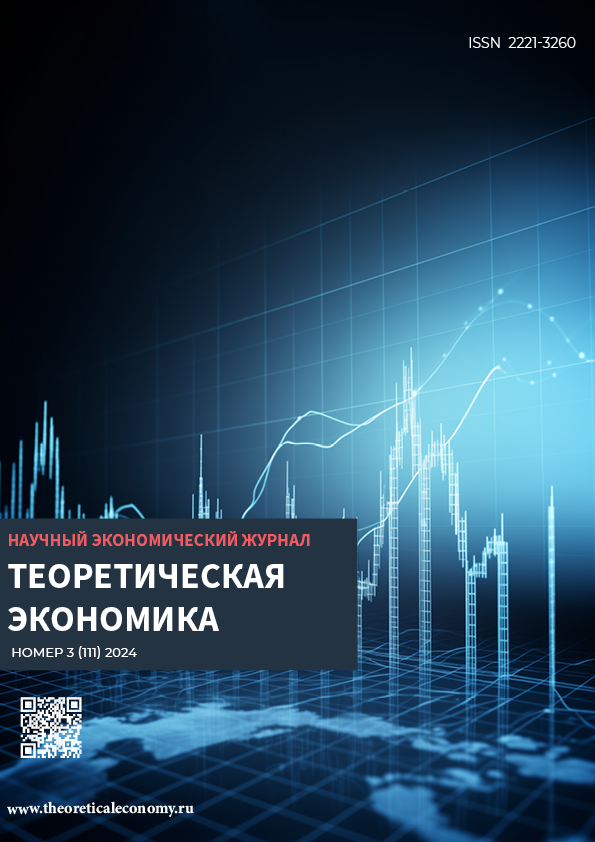Ekaterinburg, Ekaterinburg, Russian Federation
The article’s relevance is defined through the necessity, become mature, to rethink the world order functioning on “Western gauges” and to solve a complex of external and internal tasks in mutual connection of blocks of historical and chronological, cultural and educational, and semantic-worldview character. This article touches upon the problem of forming the multi-polar world and defining the Russia’s positions in it in terms of turn to the East. The article’s goal is to substantiate semantic-worldview vision of perspectives of interaction in it. Basic tasks included developing the noosphere approach considered as methodological basis, means semantic-worldview aspects, substantiating on this basis the idea of noosphere interaction and perspectives of its forming. It’s ascertained, that finding by Russia the national identity, allowing to take worthy place in forming multi-polar world, bases on noosphere approach. Necessity to appeal to it is strengthen in critical periods of civilizational development, being the only possible way to solve deep global contradictions. Based on this approach, the Russian authors developed noosphere teaching into paradigm of noosferism (A.I. Subetto), noosphere development (Y.V. Safroshkin), semio-sphere (Y.M. Lotman etc.), “digito-sphere” (O.A. Lavrenova). One else methodological opportunity is semantic-worldview approach (Arabist N.N. Vashkevich), getting especial relevance in the context of Russian-Arabic interaction and of reformatting the world centers of influence. Synthesis of the approaches considered serves as basis for forming the idea of noosphere interaction, which goal is revival of the Russian ethnos and its further development in the interests both of the country and of the forming multi-polar order.
noosphere, noospheric development, noosferism, noospheric interaction, multi-polar world, turn to the East, Russian-Arabic interaction, worldview, semantics, Russian and Arabic languages, self-determination of ethnos
1. Antonov N.P. Rol' sub'ektivnogo faktora v perehode biosfery v noosferu// Chelovek, evolyuciya, kosmos. Sofiya. 1984. 4 kn.
2. Vashkevich N. Sistemnye yazyki mozga: Magiya slova. Razgadka mifov i legend. Yazyk i fiziologiya. Probuzhdenie soznaniya. Moskva, 1998. - 399 s.
3. Vernadskiy V.I. Nauchnaya mysl' kak planetnoe yavlenie/ V.I.Vernadskiy. – M.: Nauka, 1991. – 271s
4. V.I.Vernadskiy i noosfernaya paradigma razvitiya obschestva, nauki, kul'tury, obrazovaniya i ekonomiki v XXI veke: kollektivnaya monografiya/ Pod nauch. red. A.I.Subetto i V.A.Shamahova. V 3-h tomah. – SPb.: Asterion, 2013. – 1742s. (tom I – 574s.; tom II – 588s.; tom III – 580s.)
5. Dmitrievskaya I.V., Portnov A.N., Smirnov G.S. Noosfernaya dinamika Rossii: filosofskie i kul'turologicheskie problemy. Ch.1 //Noosfernye issledovaniya. Ivanovo. 2002. Vyp. 2.
6. Ivanov V.V. Izbrannye trudy po semiotike i istorii kul'tury. M.: 1990. T 1.
7. Kasatkina S.S. Universitet i gorod: noosfernaya vzaimosvyaz' // Vestnik Ivanovskogo gosudarstvennogo universiteta. Seriya: Gumanitarnye nauki. 2022. Vyp. 1. S. 161—167.
8. Karachev I.A., Sapir E.V. Special'nye ekonomicheskie zony Rossii i Kitaya: ocenka voznikayuschih effektov// Teoreticheskaya ekonomika, 2020. № 8. S. 71-81.
9. Krasnyh V.V. Sistema koordinat lingvokul'tury skvoz' prizmu Homo Loquens // Yazyk. Soznanie. Kul'tura. Tematicheskiy sbornik. M., 2006. S. 61-69.
10. K voprosu o buduschey nauke «semiosofiya» (v prodolzhenie razgovora s Yu.A. Sorokinym) //Yazyk, soznanie, kommunikaciya: Sb. statey / Pod red. N.V. Ufimcevoy, V.V. Krasnyh, A.I. Izotova. M.: MAKS Press, 2010. Vyp. 40. 156 s. ISBN 978-5-317-03524-2
11. Lavrenova O.A. Semiosfera i digitosfera: peresechenie real'nogo, virtual'nogo i feykovogo prostranstv// 2021.
12. Lotman Yu.M. Vnutri myslyaschih mirov. – SPb. : Azbuka : Azbuka-Attikus, 2014. – 416 s.
13. Lotman Yu.M. Semiosfera. – SPb. : Iskusstvo–SPb, 2010. – 704 s
14. Moiseev N. N. Chelovek i noosfera. M.: Mol. gvardiya, 1990. 351 s.
15. Portnov A.N. Noosfera i semiosfera// Filosofskie istoki ucheniya V.I.Vernadskogo o biosfere i noosfere. Ivanovo. 1990.
16. Savicheva E.M., Brebdani A.M., Ryzhov I.V. Kitay i strany Soveta sotrudnichestva arabskih gosudarstv Persidskogo zaliva: ot ekonomicheskih sdelok k strategicheskomu partnerstvu // Vestnik Rossiyskogo universiteta druzhby narodov. Seriya: Mezhdunarodnye otnosheniya. 2022. T. 22. №1. C. 180-196.
17. Safroshkin Yu.V. Noosfernoe razvitie i zemnaya noosfera (materialy o dvuh putyah v buduschee) / Yu.V. Safroshkin – Ul'yanovsk: UlGTU, 2004.− 195 s.
18. Smirnov G.S., Smirnov D.G. Ipostasi noosfernoy istorii//Izvestiya vuzov. Seriya «Gumanitarnye nauki» 2012. № 3 (1). S. 21-28.
19. Smirnov D. G. Semiosofiya noosfernogo universuma: noosfera i semiosfera v global'nom diskurse. Ivanovo: Ivan. gos. un-t, 2008. 372 s.
20. Smirnov D.G. Semioticheskie osnovaniya evolyucii universuma // Vestnik KGU im. N.A. Nekrasova. – 2011. – № 3. – S. 80–84.
21. Sorokin Yu.A. Nekanonicheskaya rusistika: (Stat'i, zametki, repliki). / Otv.redaktor d.f.n. A.P. Yudakin. M.: Ariadna, 2008. 172 s.
22. Subetto A.I. Yu.A.Gagarin – eto simvol nachala Kosmicheskoy Ery v razvitii chelovechestva// Teoreticheskaya ekonomika. 2023. T.105. № 9. S. 121-135.
23. Subetto A.I. Noosferizm – novaya sistema sohraneniya i razvitiya chelovechestva na Zemle // Teoreticheskaya ekonomika, 2019. № 6. S. 27-43.
24. Teliya V.N. Russkaya frazeologiya. Semanticheskiy, pragmaticheskiy i lingvokul'turologicheskiy aspekty. M.: Shkola ´Yazyki russkoy kul'turyª, 1996. Chast' III. Kul'turno-yazykovaya specifika edinic frazeologicheskogo sostava yazyka. S. 214-269.
25. Frolov A.A., Kozhevnikov K.I. Siriysko-Irakskaya torgovlya: na puti k regional'noy povestke dnya// Mezhdunarodnaya torgovlya i torgovaya politika. 2022. Tom 8. № 2 (30). S. 20-30.
26. Shkvarya, L.V., Byasharova A.R. Vneshnyaya torgovlya Iraka i puti preodoleniya ee disproporciy: strukturnyy analiz // Teoreticheskaya ekonomika. 2023. № 12. S.87-95. - URL: http://www.theoreticaleconomy.ru
27. Wallerstein I. Geopolitics and Geoculture: Essays on the Changing World-System. Cambridge: Cambridge University Press, 1991.
 This work is licensed under Creative Commons Attribution-NonCommercial-NoDerivatives 4.0 International
This work is licensed under Creative Commons Attribution-NonCommercial-NoDerivatives 4.0 International


















